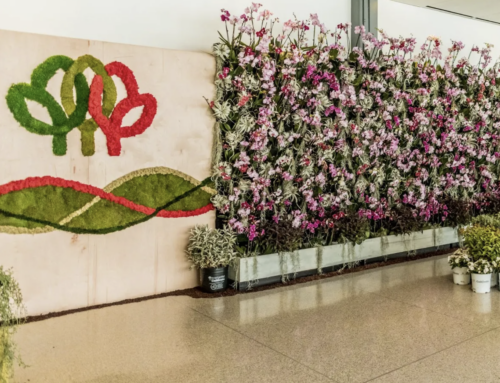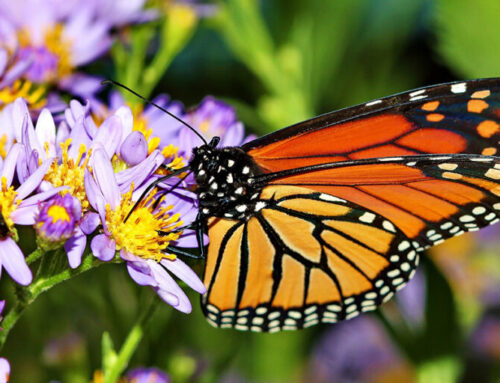These Spring Flowers are: “Underused & Unbelievable”
Before we move on from the early spring season, there are several garden flowers worth noting that prefer the cool temperatures still upon us. To date, in this blog over the past several months, we have covered some of the more commonly used cool-season traditional: Pansy (Viola), Primrose, and Ornamental Kale and Cabbage. If you are wondering if we are going to dig up the Corpse Flower again, no, that’s not considered a typical garden plant. Besides, with spring coming we are moving on to more pleasant aromas.
Not truly a Marigold, but True-hearted as Shakespeare
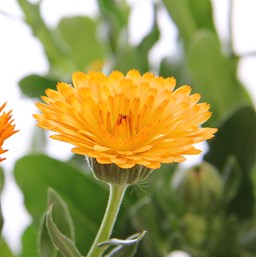
Known both as Calendula or Pot Marigold, Calendula officinalis could be used more in landscapes and containers. To start with, it is not a true Marigold and therefore effort is made to identify it with its proper name, Calendula. The plant has a distinguished history as an Old-World plant in Shakespeare’s era with culinary and medicinal uses. Just how effective was Calendula for treating sickness? Considering the morbid practice of blood-letting as a cure for a common cough to the plague was in full swing, Calendula might have been a desirable alternative, regardless of its ineffectiveness. Pot Marigolds, or what Shakespeare referred to as Marigold or Mary-buds, are woven into his sonnets, songs, and literary works. In the classic, The Winter’s Tale, the Marigold flower was a descriptive compliment for the character Perdita. As for the Shakespearian aficionados among you wondering weren’t Mary-buds also referenced in his tragic play, Cymbeline, embellishing dear Cloten’s song, “Hark, Hark, the Lark”. Why yes, very true, those were Calendulas, as well, and we’re fortunate we didn’t let that one slip for certainly, our informed readers would have noted.
Calendula, most commonly used as an Annual, prefers full sun and grows in a range of 1-2’ depending on the garden conditions. Too much shade and expect Calendula growth to become leggy. As summer wears on and the temperature is too hot, we say Calendulas “sulk” and can look a bit shabby. Flowers are daisy-like and ranging in colors: bright yellow, orange, and shades of cream, and some pink. Consider deadheading spent blooms to promote further flowering. Though truly an eye-catcher, one wonders if the variety ‘Sherbet Fizz’ re-invigorates interest in consuming Calendula once again, as harkening back to the days of yore (and blood-letting).
Award Winner: Far North to the Deep South
Dianthus is another flower for the cool season and comes in many shapes, sizes, and classes (perennial, annual, and biennial). The taller perennial species, which we more commonly regard as Carnations, are also found in Shakespearian literature; Romeo and Juliet, as you might expect. But deeply we have already delved into Shakespeare and are reaching (or exceeding) capacity for our garden blog. Moving beyond the 17th Century, Dianthus is effectively used as an annual for color massing in floral beds and effectively pops of color in containers and window boxes. Annual Dianthus prefers the sun and stays a compact 6-12”. As with other flowers we discussed that thrive in cooler weather, Dianthus can go through a temporary “shut-down” when the summer gets too hot.
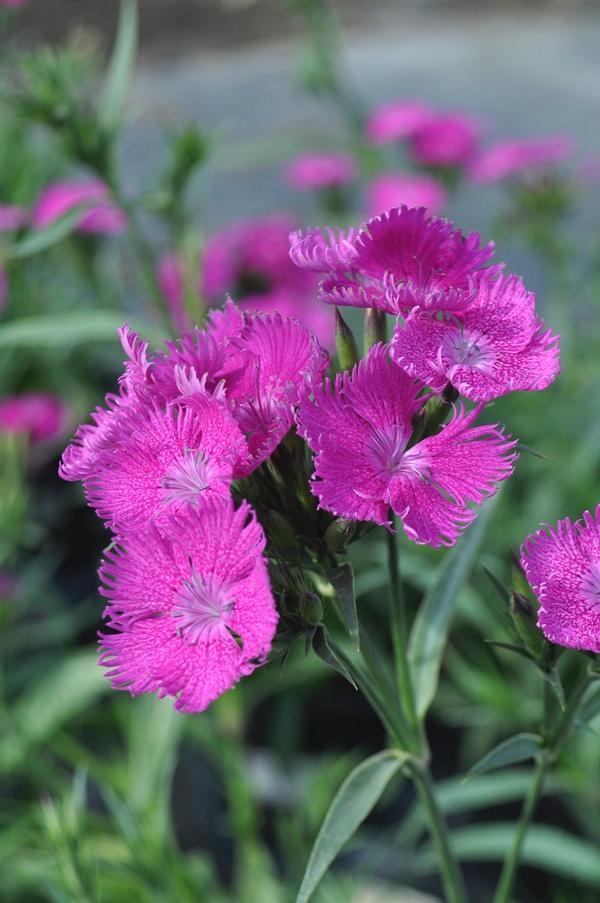
A testimony to the hardiness of Dianthus, the variety ‘Bouquet Purple’, received Perennial Plant of the Year awards from Minnesota, (think cold) but as well as (think hot) Mississippi and Arkansas. A plant to excel and perform in such a wide geographical range is truly exceptional. Bouquet Purple is a hybrid cross with flower stems reaching 20” that do not require staking. Butterflies love this flower which releases a pleasant fragrance of spice.
Perennial Dianthus are more tolerant of cold weather than the Annual varieties, which need some protective covering when temperatures drop much below 40 F for an extended period of time.
Oddball Blooms in Bright Colors
Torenia (Torenia fournieri) a.k.a. the Wishbone Flower rounds out our trio of under-used flowers for cooler weather. Often blooming from early summer to frost, as with the others discussed in this posting, it is not fond of hot weather and may “take a break” for a time. Torenia will benefit from shade from direct sun in mid-summer, plus maintaining adequate soil moisture during heat periods is recommended. Add Torenia to the list of select flowers that bring color to remedy dull, bland settings of part shade and shade. Flower blooms often bi-color, are available in blue and white, and shades of purple and yellow and pink. Torenia is best treated as an Annual and usually remains small at 6-12” height and equal spread. Plants can be pinched back to create a bushy, compact form when they appear stretched and thin.
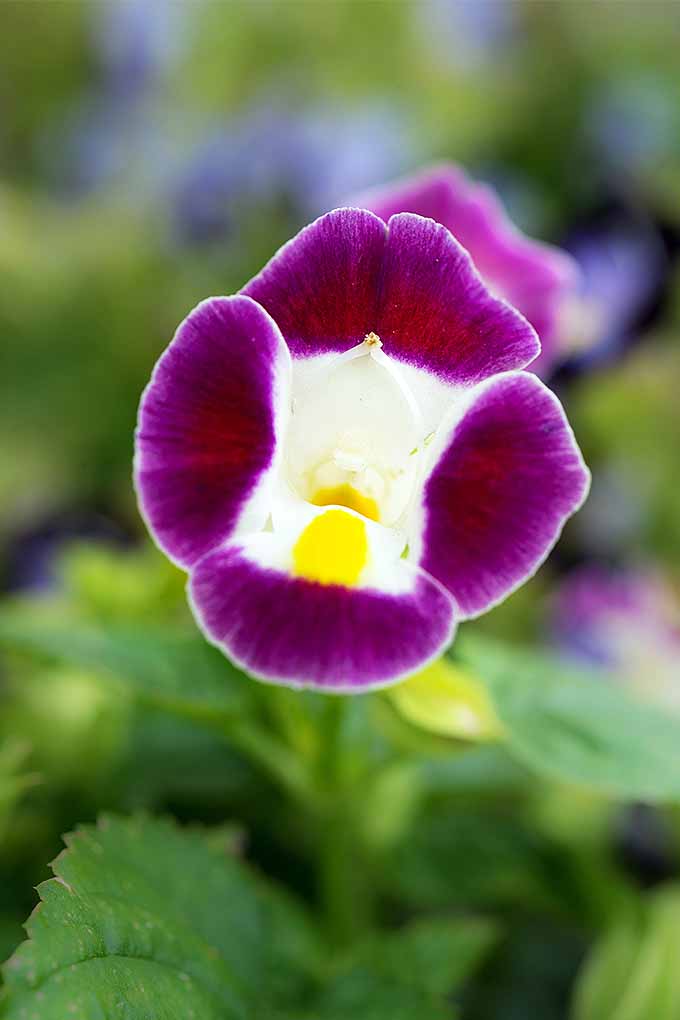
I put Torenia in that class of flowers that are best appreciated when the flowers can be viewed at close range. Planted in pots, hanging baskets, and containers that are positioned near a doorway entrance, a bench, patio settings, and along walk-ways enables one to truly see the vivid colors and unique structure of the flower. The flower form can look somewhat like a pansy from a distance, yet closer inspection reveals a trumpet and tubular split arrangement creating the wishbone effect where it gets its common name.
-Rob McCartney, Horticulturist
Please feel free to contact me with any questions or for more info at:
Connect with us on social media!

